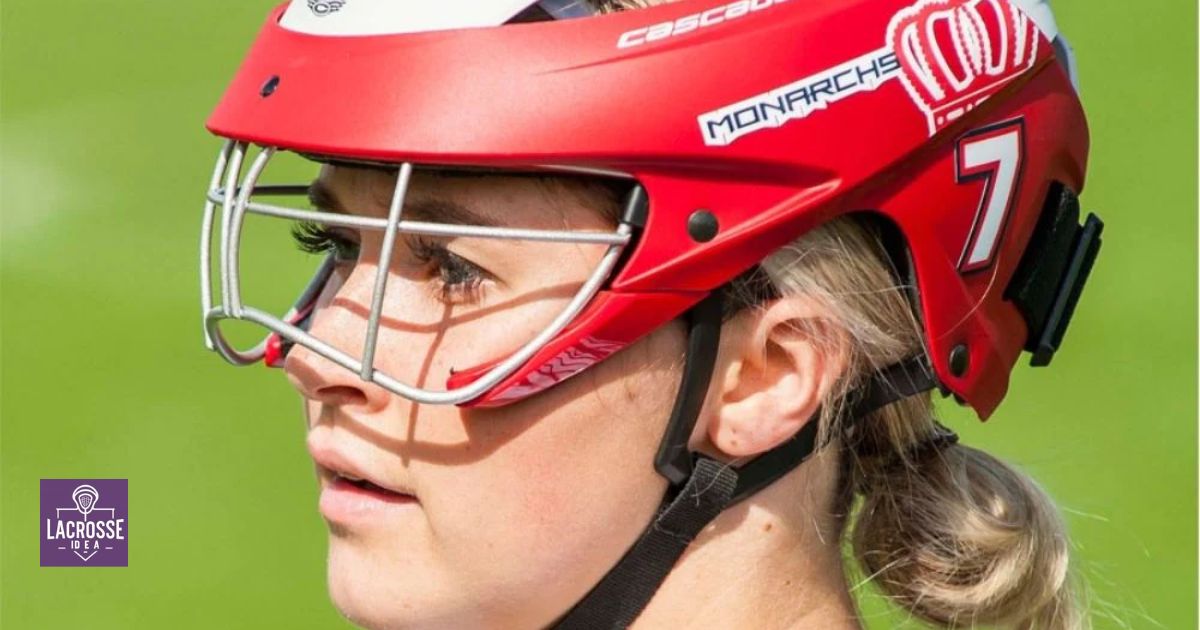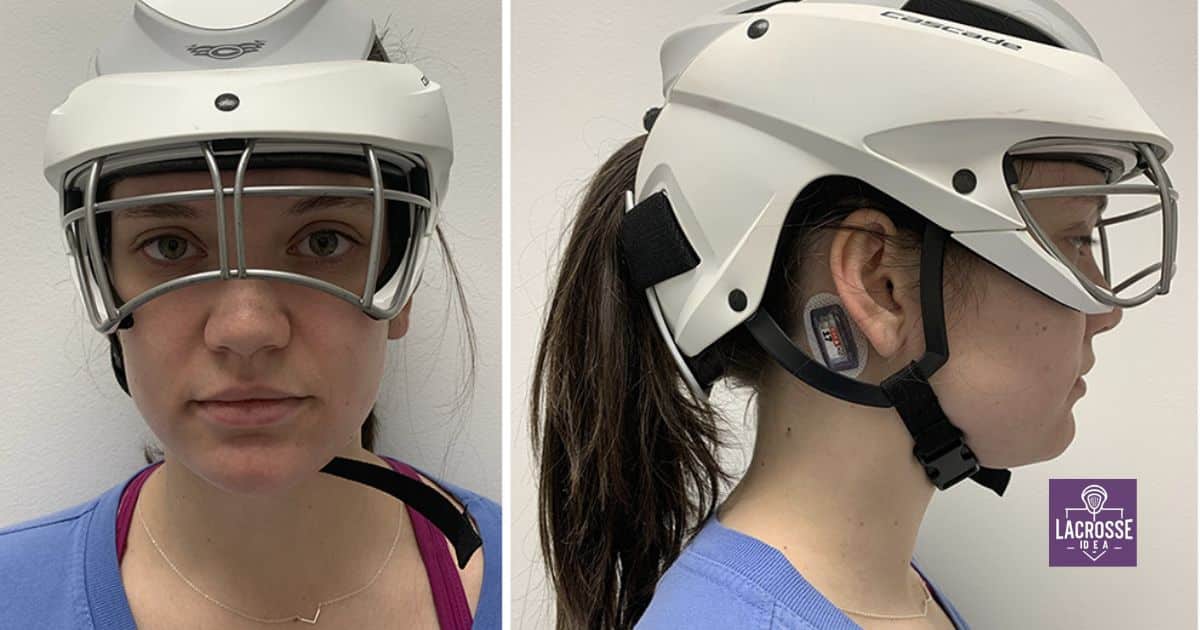In the realm of women’s lacrosse, the absence of helmets has raised many questions and sparked debates. While their male counterparts don protective headgear, female lacrosse players do not. This unique distinction has prompted inquiries into the rationale behind this discrepancy. Understanding the reasons behind the lack of helmets in women’s lacrosse requires a consideration of various factors, including the rules governing the sport, the efficacy of headwear in preventing injuries, and the potential impact on concussion rates.
This article delves into the complexities surrounding this issue, examining the pros and cons of helmet usage in women’s lacrosse and exploring the available headwear options. By shedding light on this topic, we aim to provide a comprehensive understanding of the ongoing discussions surrounding women’s lacrosse and helmet usage.
Key Takeaways
- Rules explicitly prohibit the use of helmets in women’s lacrosse to preserve the traditional nature of the game and maintain a sense of belonging within the lacrosse community.
- The absence of helmets encourages players to develop better defensive techniques.
- The introduction of mandatory protective eyewear highlights the growing recognition of the need for enhanced safety measures.
- Wearing helmets significantly reduces the risk of head injuries and concussions in women’s lacrosse.
Rules Regarding Women’s Lacrosse Helmets
The rules governing women’s lacrosse explicitly prohibit the use of helmets, despite the potential for head injuries in the sport. This rule has often been a topic of debate and concern among players, coaches, and parents. The rationale behind this prohibition stems from the desire to preserve the traditional nature of the game and maintain a sense of belonging within the lacrosse community. Women’s lacrosse is known for its emphasis on skill, finesse, and agility, and the use of helmets is seen as a departure from these core principles.
Additionally, some argue that the absence of helmets encourages players to develop better defensive techniques and promotes safer gameplay overall. However, it is important to note that ongoing discussions about player safety have led to the introduction of mandatory protective eyewear in women’s lacrosse, highlighting a growing recognition of the need for enhanced safety measures.
Pros And Cons Of Wearing Helmets In Women’s Lacrosse
An analysis of the pros and cons of wearing helmets in women’s lacrosse reveals important considerations for player safety and the preservation of the sport’s traditional nature. While the use of helmets can provide enhanced protection against head injuries, it also raises concerns about altering the essence of the game. Here are the pros and cons to consider:
- Pro: Increased head protection – Helmets can reduce the risk of concussions and other head injuries, promoting player safety.
- Con: Altered playing experience – Wearing helmets may change the dynamics of the game, affecting the traditional aspects of women’s lacrosse.
- Pro: Confidence and reassurance – Players may feel more secure knowing they have added head protection, allowing them to perform at their best.
- Con: Limited peripheral vision – Helmets can restrict the range of vision, potentially impacting players’ ability to anticipate and react to game situations.
In weighing these pros and cons, it is essential to balance player safety with the essence and spirit of women’s lacrosse.
Headwear Options At Lacrosse Fanatic
At Lacrosse Fanatic, we offer a range of headwear options for women’s lacrosse players to enhance their comfort and style on the field. We understand the importance of feeling a sense of belonging and confidence while participating in this exhilarating sport. Our headwear options are designed with both functionality and fashion in mind. Whether you prefer visors, caps, or headbands, we have something to suit every player’s individual taste.
Our headwear is made from high-quality materials that provide comfort and breathability, ensuring that you can focus on your game without distractions. Additionally, our headwear options come in various colors and designs, allowing you to express your unique personality and style. Visit Lacrosse Fanatic today and find the perfect headwear to complete your lacrosse ensemble.
Different Rules For Boys’ And Girls’ Lacrosse
In terms of regulations, boys’ and girls’ lacrosse have distinct rules that govern their gameplay and equipment requirements. These differences stem from the historical development of the sport and the varying levels of contact allowed in each version. Here are the key variations between boys’ and girls’ lacrosse:
- Contact: Boys’ lacrosse permits more physical contact, allowing body checking and stick checking. In contrast, girls’ lacrosse emphasizes non-contact play, with minimal physical contact allowed.
- Protective Gear: Boys are required to wear helmets, shoulder pads, elbow pads, gloves, and mouthguards for added safety. Girls, on the other hand, typically wear goggles and mouthguards, with helmets being optional.
- Stick Dimensions: Boys’ sticks have deeper pockets and are designed for more aggressive play, while girls’ sticks have shallower pockets to facilitate easier ball release and catching.
- Field Size: Boys’ lacrosse is played on a larger field, allowing for more players and increased physicality, whereas girls’ lacrosse is played on a smaller field, promoting fast-paced, skill-based gameplay.
Understanding these distinctions is crucial for players, coaches, and fans alike, as it helps to appreciate the unique dynamics and strategies employed in each version of the sport.
Impact Of Protective Headgear On Concussion Rates
The presence of protective headgear in women’s lacrosse has been shown to significantly impact concussion rates. Research studies have consistently demonstrated that wearing helmets can reduce the risk of head injuries and concussions in the sport. This is particularly important as lacrosse involves high-speed movements and physical contact, increasing the likelihood of head injuries. The use of protective headgear provides a layer of cushioning and protection, absorbing and dispersing the impact forces that can cause concussions.
By implementing this safety measure, players can feel more secure and confident in their ability to participate in the sport without compromising their long-term health. However, despite the proven benefits, there is still a debate over mandating hard-shell helmets for girls’ lacrosse. This debate will be further explored in the next section.
The Debate Over Mandating Hard-Shell Helmets For Girls’ Lacrosse
The ongoing discussion surrounding the implementation of hard-shell helmets for girls’ lacrosse centers around the necessity and potential impact on player safety. Here are four key points to consider in this debate:
- Injury prevention: Proponents argue that hard-shell helmets can significantly reduce the risk of head and facial injuries, protecting players from concussions and other severe impacts.
- Learning curve: Opponents assert that introducing helmets may change the nature of the game and require players to adapt their techniques, potentially hindering skill development.
- Cost and accessibility: Implementing mandatory helmets could pose financial barriers for some programs, making it difficult for all players to afford the necessary equipment.
- Perception and culture: Critics contend that introducing helmets may perpetuate the misconception that women’s lacrosse is a dangerous sport, potentially deterring participation and hindering the growth of the game.
With the ongoing debate over hard-shell helmets in girls’ lacrosse, it is vital to recognize the role of sports in promoting a healthy lifestyle.
The Role Of Sports In A Healthy Lifestyle
Continuing the discussion from the previous subtopic, one must acknowledge the significant role that sports play in promoting a healthy lifestyle. Sports provide a multitude of benefits that contribute to physical, mental, and social well-being. Engaging in regular physical activity through sports helps improve cardiovascular health, build strength and endurance, and maintain a healthy weight. Moreover, sports offer an outlet for stress relief, enhancing mental well-being and reducing the risk of mental health disorders.
Additionally, participating in sports fosters social connections and a sense of belonging, as individuals become part of a team, build relationships, and develop teamwork skills. The camaraderie and support from teammates can positively impact self-esteem and overall satisfaction with life. In conclusion, sports serve as a powerful tool in promoting and maintaining a healthy lifestyle, encompassing physical, mental, and social well-being.
Reasons Behind The Absence Of Helmets In Women’s Lacrosse
Why don’t women’s lacrosse players wear helmets? There are several reasons behind the absence of helmets in women’s lacrosse:
- Tradition: Women’s lacrosse has a long-standing tradition of not wearing helmets. The sport was originally designed to be less physical than men’s lacrosse, and the absence of helmets is seen as a way to maintain the spirit of the game.
- Focus on skill and strategy: Without helmets, players are encouraged to focus more on skill, agility, and strategy rather than relying on physicality. This promotes a more finesse-based style of play.
- Comfort and mobility: Helmets can be bulky and restrictive, hindering movement and comfort on the field. Women’s lacrosse emphasizes speed and agility, and helmets could potentially impede players’ ability to perform at their best.
- Different rules and equipment: Women’s lacrosse has rules and equipment designed to minimize contact and reduce the risk of head injuries. These include penalties for dangerous play and mandatory use of protective eyewear.
With an understanding of the reasons behind the absence of helmets in women’s lacrosse, it is important to evaluate the effectiveness of girls lacrosse helmets in preventing concussions.
Effectiveness Of Girls Lacrosse Helmets In Preventing Concussions
To assess the efficacy of girls lacrosse helmets in reducing the risk of concussions, it is crucial to examine their impact on player safety and the overall effectiveness of their design. While helmets are not currently mandatory in girls lacrosse, their use is increasing as awareness of head injuries grows. Research suggests that helmets can provide some protection against direct impacts to the head, reducing the severity of injuries and the risk of concussions.
However, it is important to note that helmets alone cannot completely eliminate the risk of concussions in lacrosse. Other factors, such as proper technique, rule enforcement, and player education, also play a significant role in preventing head injuries. The effectiveness of girls lacrosse helmets in preventing concussions requires ongoing evaluation and improvement to ensure the safety of players.
Should Helmets Be Required In Girls’ Lacrosse
Girls lacrosse helmets should be required to ensure the safety and well-being of players, as they have been shown to reduce the risk of head injuries and concussions. Here are four reasons why helmets should be mandatory in girls’ lacrosse:
- Protection: Helmets provide an additional layer of protection for players, shielding their heads from direct impact during games and practices.
- Prevention of concussions: Head injuries and concussions are prevalent in lacrosse, and helmets have been proven to significantly decrease the risk of these injuries.
- Equality: Requiring helmets in girls’ lacrosse would ensure that players have the same level of protection as their male counterparts, promoting fairness and inclusivity.
- Future health: By implementing helmet regulations, we can prioritize the long-term health of players, minimizing the potential for lifelong consequences associated with head injuries.
With the understanding of why helmets are necessary, it is crucial to explore the best girls lacrosse helmet options to ensure optimal safety and performance.
Exploring The Best Girls Lacrosse Helmet Options
Continuing the discussion from the previous subtopic on the importance of helmets in girls’ lacrosse, it is now essential to explore the available options for the best girls lacrosse helmet. When it comes to choosing the right helmet, there are a few key factors to consider. Firstly, the helmet should meet the safety standards set by the relevant governing bodies, such as NOCSAE (National Operating Committee on Standards for Athletic Equipment).
It should have a sturdy construction and provide adequate protection for the head and face. Additionally, a good girls lacrosse helmet should be comfortable to wear and have adjustable features to ensure a secure fit. Some popular options in the market include Cascade LX, STX Sultra, and Warrior Burn Pro. It is important to carefully evaluate these options and choose the one that best suits your needs in terms of safety, comfort, and performance.
Higher Concussion Rates In Women’s Lacrosse Compared To Other Sports
The alarming disparity in concussion rates between women’s lacrosse and other sports necessitates a closer examination of the factors contributing to this concerning trend. While lacrosse is generally considered a non-contact sport, the rate of concussions among female players is significantly higher compared to other sports. Several factors contribute to this phenomenon:
- Lack of protective gear: Unlike their male counterparts, women’s lacrosse players do not wear helmets, resulting in a higher risk of head injuries.
- Rule differences: Women’s lacrosse has fewer regulations regarding body checking, leading to more frequent collisions and potential head injuries.
- Gender-specific biomechanics: Research suggests that women may be more susceptible to concussions due to differences in neck strength, head mass, and hormonal variations.
- Cultural factors: The perception of women’s lacrosse as a non-contact sport may downplay the seriousness of potential head injuries, leading to underreporting and delayed treatment.
Addressing these factors is crucial in mitigating the higher concussion rates and ensuring the safety of female lacrosse players.
FAQ’s
Do girls wear goggles in lacrosse?
In women’s lacrosse, the use of goggles is mandatory for players across all age groups, ranging from youth to adult levels. This safety measure ensures the protection of players’ eyes during the game. The requirement underscores the sport’s commitment to player safety and is implemented consistently across various age divisions within women’s lacrosse.
Why do women’s lacrosse drop their sticks?
After scoring a goal in women’s lacrosse, players have to drop their sticks, allowing the referee to check if the stick is legal and validate the goal. This rule ensures a fair game and prevents players from using illegal sticks.
Do girls have to wear skirts in lacrosse?
Conclusion
In conclusion, the debate over whether women’s lacrosse players should wear helmets continues. While some argue that helmets provide added protection against concussions, others believe that they may alter the nature of the game. Regardless, it is crucial to address the issue of higher concussion rates in women’s lacrosse compared to other sports. Further research and consideration are needed to determine the best approach to ensure the safety of women’s lacrosse players.








